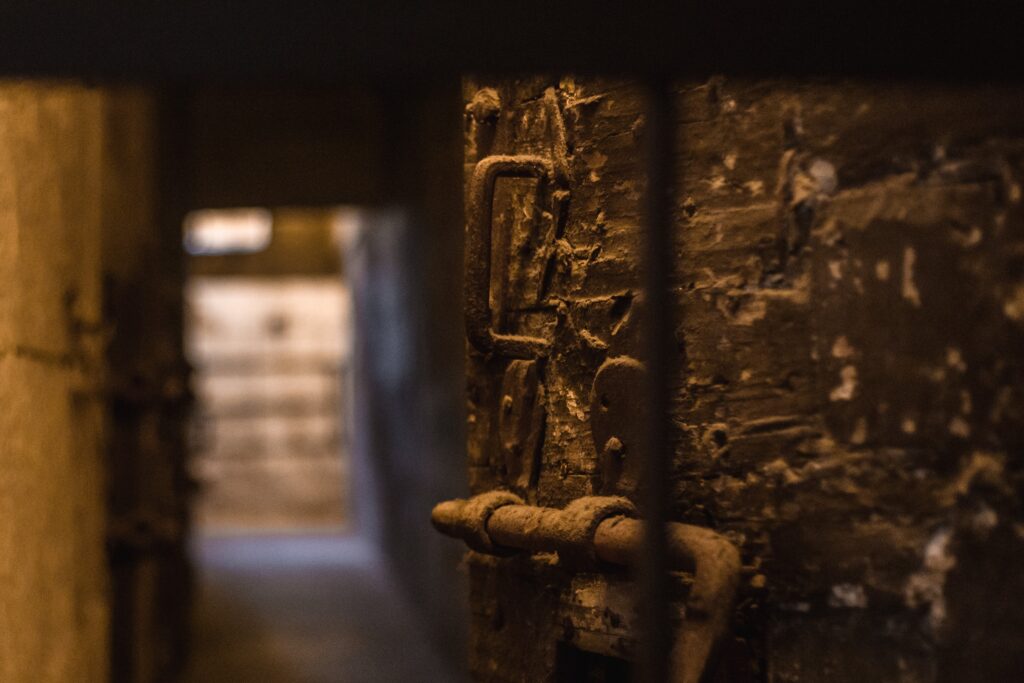Prisoners and way of life
The problem, namely that of the conditions of the prisoners, was the main issue: the idea of a "new" and "modern" prison had in fact to do with the will to improve this aspect as well. Even if as for "improvement", on the second floor is visible the torture room , the so-called "innovation" must be considered in relation to the mentality of the time, and therefore it can be said that features of modernity were incorporated into the general lines of the project.
The most evident is the well that was built just for the prisoners who could come out of the cell every day to collect water themselves, even if chained and under the observation of the guardians. The food that the inmates received every day were two loaves of fresh half kilo bread which over time, due to budget cuts, became pan biscotto.
The meat was distributed only on certain occasions: on the occasion of the election of the Doge, for the appointment of some important person in some important institutional position, or during the Carnival on the occasion of the bull hunt, an entertainment show that consisted of hunting of a real bull, which captured, was killed and slaughtered, and whose pieces were then distributed to the prisoners.
The numerous charitable fraternities (called “Scuole” in local dialect) that existed in Venice, came to carry out their commitment of charitable assistance, bringing food, water, legal and medical assistance not only to the inmates but also to the poor beggars who camped under the external portico, looking for shelter or hoping for something to eat.
Inside the prison, a doctor visited the inmates every day and a priest was present for the final functions of those who ended their existence here, or for any need for support and comfort.
Given these general guidelines, it is possible to make some considerations on the success of the project, that is, if it has solved the problems of detention in the the Doge’s Palace, and first of all that of space. Ultimately, it can be said that this did not happen, since even in the New Prisons the cells ended up overcrowded.
Other problems ended up making detention very difficult such as poor hygiene - cells were cleaned during the year (not during the month or during the week) with vinegar and quicklime, in addition to the common use of a wooden bucket as toilet, which created an unbearable stench in the small space shared by the prisoners. Finally, as a further factor, the congenital humidity of thelagoon environment is added, to make the prison the ideal environment for the spread of diseases, epidemics, mice, rats and insects.
The last evaluation with numbers gives us the exact vision of the real improvements that could be obtained: in the the Doge’s Palace 35% of the prisoners managed to survive, in the Palazzo delle Prigioni Nuove it reached about 45-50%, which in other words, it means that the remaining 50% ended their existence here.
